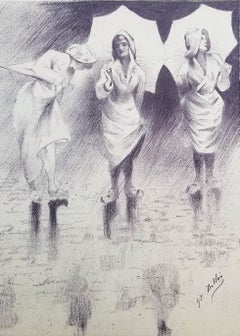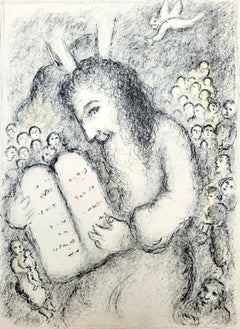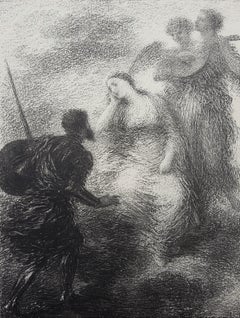Want more images or videos?
Request additional images or videos from the seller
1 of 12
Constantin Ernest Adolphe Hyacinthe GuysFemmes en Jolie Robes1939
1939
$75List Price
About the Item
- Creator:Constantin Ernest Adolphe Hyacinthe Guys (1802-1892, French)
- Creation Year:1939
- Dimensions:Height: 14 in (35.56 cm)Width: 10.5 in (26.67 cm)
- Medium:
- Movement & Style:
- Period:
- Condition:
- Gallery Location:Saint Augustine, FL
- Reference Number:1stDibs: LU12122245623
About the Seller
5.0
Platinum Seller
Premium sellers with a 4.7+ rating and 24-hour response times
Established in 1978
1stDibs seller since 2015
1,366 sales on 1stDibs
Authenticity Guarantee
In the unlikely event there’s an issue with an item’s authenticity, contact us within 1 year for a full refund. DetailsMoney-Back Guarantee
If your item is not as described, is damaged in transit, or does not arrive, contact us within 7 days for a full refund. Details24-Hour Cancellation
You have a 24-hour grace period in which to reconsider your purchase, with no questions asked.Vetted Professional Sellers
Our world-class sellers must adhere to strict standards for service and quality, maintaining the integrity of our listings.Price-Match Guarantee
If you find that a seller listed the same item for a lower price elsewhere, we’ll match it.Trusted Global Delivery
Our best-in-class carrier network provides specialized shipping options worldwide, including custom delivery.You May Also Like
Théo Tobiasse "Cantate 51 de Bach" Signed 1979 Lithograph, Music & Memory Theme
By Théo Tobiasse
Located in Miami, FL
THÉO TOBIASSE – "CANTATE 51 DE BACH POUR LES JOURS DE LUMIÈRE"
⚜ Lithograph on paper ⚜ Hand signed and numbered ⚜ Conservation framed
SYMPHONIC FIGURATION FROM TOBIASSE’S FEMME SERI...
Category
1970s Modern Figurative Prints
Materials
Lithograph
$3,800
H 49.75 in W 36.375 in D 1.5 in
Italian 1980s Ugo Attardi Signed Work on Paper Nude of Woman
By Ugo Attardi
Located in Roma, IT
Italian 1980s Ugo Attardi Signed Work on Paper Nude of Woman
A beautiful "Prova d'Artista" Pop Art-inspired graphic work by one of Italy's greatest modern artists, Ugo Attardi.
It d...
Category
Late 20th Century Modern Nude Prints
Materials
Lithograph
$1,921
H 32.88 in W 39.77 in D 2.76 in
1950s Italian Signed Lithograph by Francesco Messina
By Francesco Messina
Located in Roma, IT
Beautiful lithograph by the great postwar Italian artist Francesco Messina.
Depicts in a beautiful pose a nude of a woman "Lying Model"
Very rare "Artist's Proof Hors Commerce" wit...
Category
Mid-20th Century Modern Nude Prints
Materials
Lithograph
$840
H 1.19 in W 24.41 in D 19.3 in
"Labor in a Diesel Plant" Machine Age American Scene Industrial Mid 20th Century
By Letterio Calapai
Located in New York, NY
"Labor in a Diesel Plant" Machine Age American Scene Industrial Mid 20th Century
Letterio Calapai (American 1902-1993)
''Labor in A Diesel Plant''
Wood engraving, 1940
17 x 10 1/2...
Category
1940s American Modern Figurative Prints
Materials
Lithograph
$6,900
H 23 in W 16 in D 2 in
From “The Four Seasons Suite” Series
By Alvar Sunol Munoz-Ramos
Located in San Francisco, CA
This hand-signed, limited-edition lithograph with embossing is by the renowned Catalan Modernist artist Alvar Suñol Muñoz-Ramos, commonly known as Alvar. Part of “The Four Seasons” s...
Category
1970s Modern Figurative Prints
Materials
Paper, Lithograph
$1,350
H 37.25 in W 30.5 in D 1.5 in
“Europa and the Bull”
By Alvar Sunol Munoz-Ramos
Located in San Francisco, CA
You have to hand it to the bull. Not just taking Europa with his unassailable power (he is Zeus in disguise, after all) he brings along a retinue for his seduction of the beautiful P...
Category
1980s Modern Figurative Prints
Materials
Paper, Lithograph
“Winter” from the “Four Seasons Suite” Series
By Alvar Sunol Munoz-Ramos
Located in San Francisco, CA
This embossed, numbered and signed lithograph, part of the “Four Seasons Suite,” is by Alvar Suñol Muñoz-Ramos (b. 1935), a renowned Spanish ar...
Category
1970s Modern Figurative Prints
Materials
Paper, Lithograph
$1,350
H 37.25 in W 30.5 in D 2 in
“Femme à La Guitare”
By Alvar Sunol Munoz-Ramos
Located in San Francisco, CA
A woman with flowing hair plays her guitar so beautifully that she captivates the full attention of a bird. Entranced, the creature responds with a full display of its feathers. The ...
Category
1980s Modern Figurative Prints
Materials
Paper, Lithograph
Vintage SIGNED Kitaj Poster, La Fabbrica, Milan (A Life 1975) woman in red dress
By Ronald Brooks Kitaj
Located in New York, NY
Printed in 1975, this poster features the encounter between an alluring woman dressed in red, and a man with his back to the viewer. The light of a streetlamp is beautifully imitated...
Category
Late 20th Century Modern Figurative Prints
Materials
Lithograph
Original A Wonderful Opportunity for You, United States Navy 1917 vintage poster
Located in Spokane, WA
Original WW1 poster: A Wonderful Opportunity for You. Ashore, on leave. United States Navy. A pre-war recruiting lithographic poster features an ebullient sailor going home o...
Category
1910s American Modern Landscape Prints
Materials
Lithograph
$1,575
H 28.25 in W 20.75 in D 0.05 in
More From This Seller
View AllPluviose (Rainfall) /// French Modern Impressionist Lithograph Paris Romantic
Located in Saint Augustine, FL
Artist: Henri Patrice Dillon (French, 1850-1909)
Title: "Pluviose (Rainfall)"
Portfolio: Revue de l'Art Ancien et Moderne
*Signed by Dillon in the...
Category
Early 1900s Modern Figurative Prints
Materials
Lithograph
Moses /// Marc Chagall Israelites Christianity Judaism Religious Modern Litho
By Marc Chagall
Located in Saint Augustine, FL
Artist: Marc Chagall (Russian-French, 1887-1985)
Title: "Moses"
*Signed by Chagall in pencil lower right
Year: 1979
Medium: Original Lithograph on Japon nacré paper
Limited edition...
Category
1970s Modern Figurative Prints
Materials
Lithograph
Nassau County Museum of Art (Sculpture/Jim Dine/Pinocchio) Poster (Signed)
By Jim Dine
Located in Saint Augustine, FL
Artist: (after) Jim Dine (American, 1935-)
Title: "Nassau County Museum of Art (Sculpture/Jim Dine/Pinocchio)"
*Signed by Dine in black marker lower right
Year: 2012
Medium: Original...
Category
2010s Pop Art Figurative Prints
Materials
Permanent Marker, Lithograph, Offset
Vision /// French Romantic Classical Figurative Lady Woman Soldier Angel Litho
By Henri Fantin-Latour
Located in Saint Augustine, FL
Artist: Henri Fantin-Latour (French, 1836-1904)
Title: "Vison"
Portfolio: Gazette des Beaux-Arts
*Issued unsigned
Year: 1895
Medium: Original Lithograph on chine appliqué on wove pap...
Category
1890s Impressionist Figurative Prints
Materials
Lithograph
Sicile (Sicily) /// French Impressionist Lithograph Modern Figurative Lady Art
By Ernest Joseph Laurent
Located in Saint Augustine, FL
Artist: Ernest Joseph Laurent (French, 1859-1929)
Title: "Sicile (Sicily)"
Portfolio: Gazette Des Beaux-Arts
*Issued unsigned, though monogram signed by Laurent in the plate (printed...
Category
1910s Impressionist Figurative Prints
Materials
Lithograph
I Need Him but I Should Leave Him /// Contemporary Lithograph Figurative Girl
By Dan May
Located in Saint Augustine, FL
Artist: Dan May (American, 1955-)
Title: "I Need Him but I Should Leave Him"
*Signed and numbered by May in pencil lower left
Year: 1984
Medium: Original Lithograph on Rives BFK pap...
Category
1980s Contemporary Figurative Prints
Materials
Lithograph



